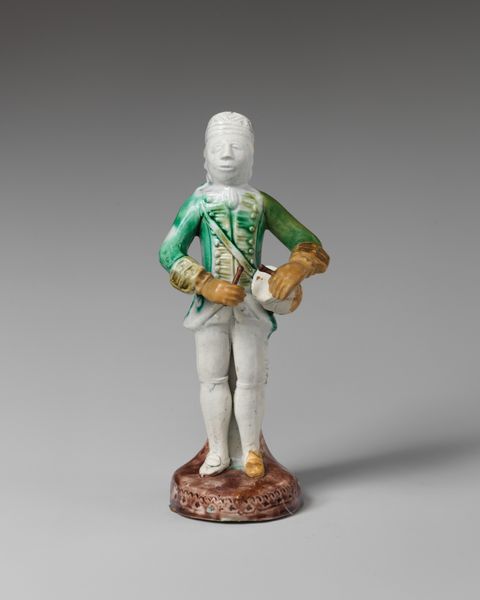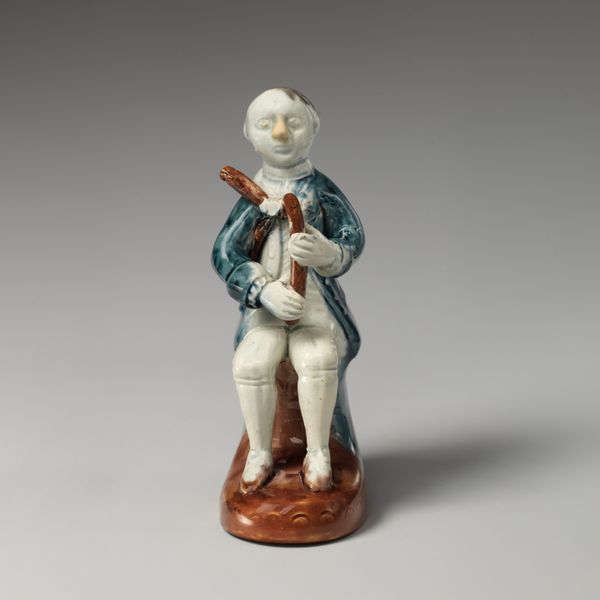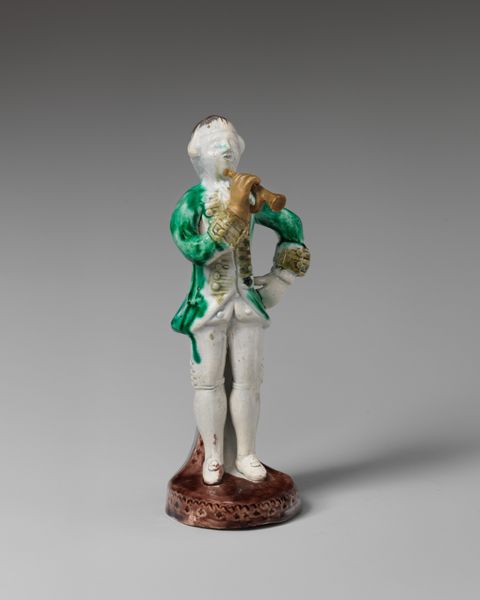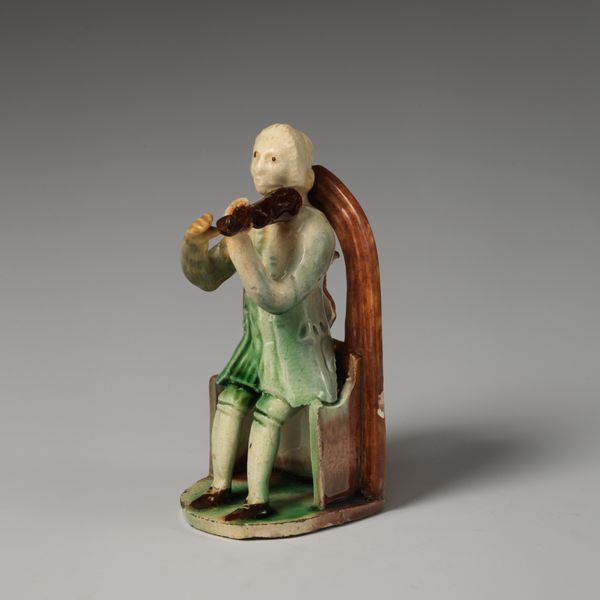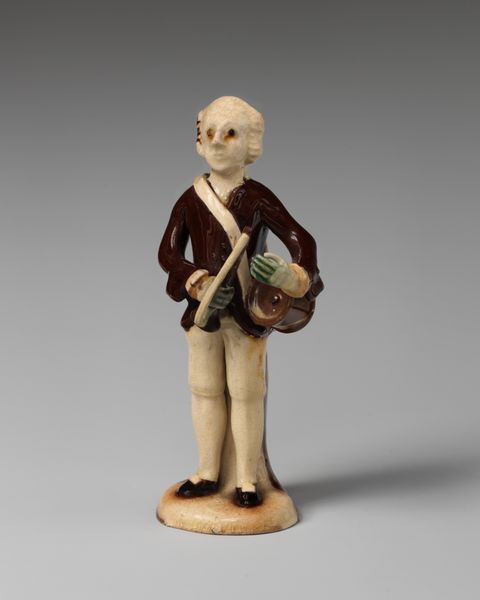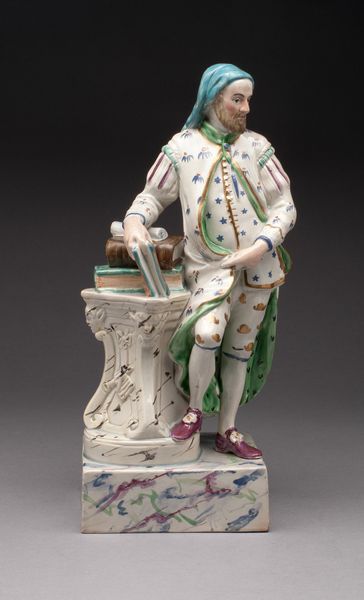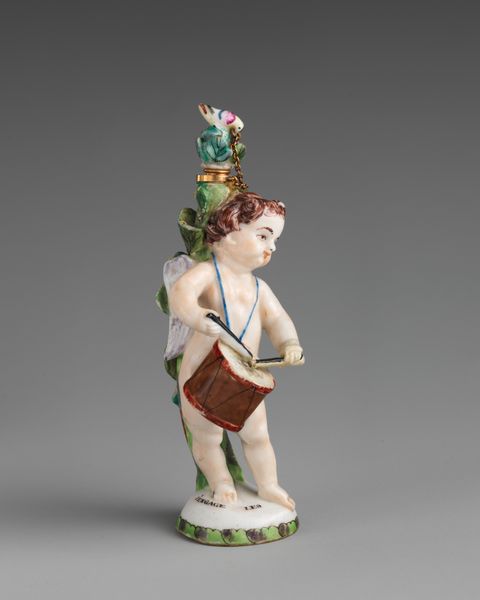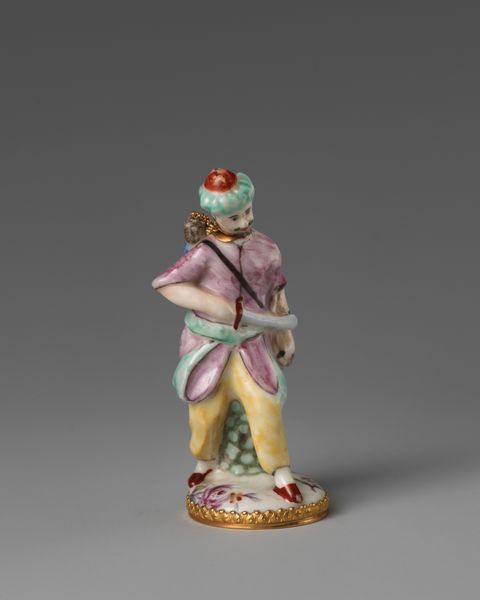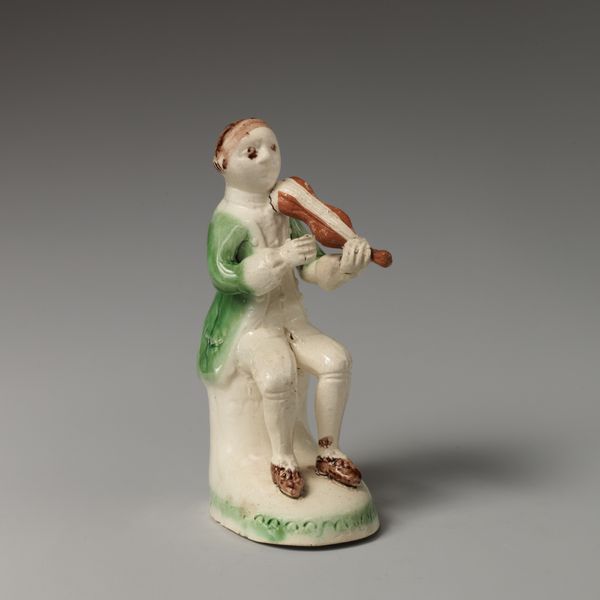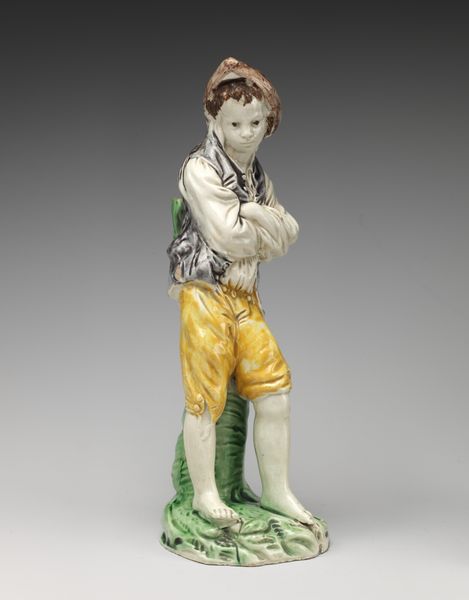
ceramic, sculpture
#
portrait
#
ceramic
#
figuration
#
form
#
sculpture
#
15_18th-century
#
men
#
genre-painting
#
decorative-art
Dimensions: Height: 5 1/2 in. (14 cm)
Copyright: Public Domain
Curator: This ceramic sculpture, "Figure of a Man Reading," was crafted between 1715 and 1745, characteristic of the Whieldon type pottery we see emerging then. The piece resides here at the Metropolitan Museum of Art. Editor: The glaze immediately grabs my attention—the vibrant green jacket against the muted browns feels so unexpected for this period. It almost feels playful, yet restrained at the same time. Curator: Absolutely, that dynamic coloration is crucial. Whieldon ware, which is noted for this figurine, marks a period of experimentation. It reflects an evolving artistic and socio-economic climate, one where there's a burgeoning middle class with leisure time to appreciate decorative arts, as well as, of course, the spread of literacy and printed materials. Editor: Precisely, and the materiality of the sculpture is interesting too. This wasn’t mass produced like later ceramics would be. What can you tell us about the production of this piece? Curator: Given its era, likely a potter in Staffordshire would have used press-molding techniques, hand-applying these distinctive colored glazes and likely creating a market responding to both utility and decoration. Thinking about this figure in the context of colonial expansion allows a deeper engagement with social class and consumption. Editor: Yes, the very act of reading represented access to knowledge and power—a powerful statement to make at that time through a sculptural object. And it's also important to note the potential issues embedded within such depictions – such as the perpetuation of an image that implicitly values male literacy over other forms of knowing and being. Curator: I think it shows an interesting glimpse into what kind of knowledge production and leisurely activities were starting to gain prominence and how those can often be embedded in objects, often uncritically reproducing a social heirarchy. Editor: Considering it as an artifact, what sticks with me is the way the clay was molded by hand; that evidence of the human shaping of the raw materials to make this effigy representing the labor of knowledge. Curator: Examining decorative pieces such as these lets us think about how class, gender, and representation interplay within our material culture.
Comments
No comments
Be the first to comment and join the conversation on the ultimate creative platform.
